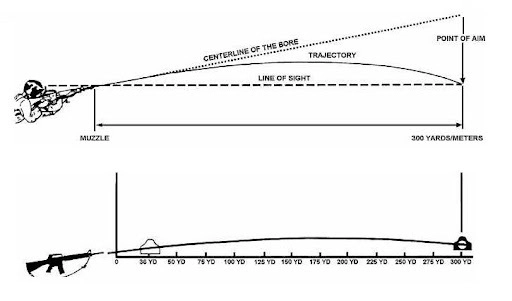🌩️ Smart Cloud Computing: How AI and ML Are Transforming Cloud Cost Optimization
☁️ The Cloud Is Smart — But Are We Using It Smartly?
Cloud computing has completely changed how businesses run. From startups to tech giants, everyone loves the flexibility, scalability, and pay-as-you-go pricing of the cloud.
But here’s the catch — while the cloud promises savings, it can quickly become a financial black hole if not managed wisely. Many companies overspend up to 70% due to underutilized resources, wrong pricing models, or lack of cost visibility.
That’s where Smart Cloud Computing comes in — using AI, ML, and automation to make the cloud not just scalable, but financially intelligent too.
🧠 What Is Smart Cloud Computing?
“Smart” here means data-driven decision-making — optimizing the cloud based on analytics, predictions, and intelligent automation instead of static rules or guesswork.
Think of it as upgrading from a manual car to a self-driving one. You still set the direction — but AI helps you drive efficiently, avoid bottlenecks, and save fuel (or in this case, cloud costs 💰).
🔍 Key Factors That Drive Cloud Costs
Before we optimize, let’s understand what drives cloud bills:
Compute: CPU, memory, and instance types
Storage: Data volume, replication, and retrieval frequency
Networking: Egress costs between regions or clouds
Monitoring & Logs: Often overlooked but can eat up 20–30% of bills
Replication: For reliability but adds extra storage and transfer cost
The trick is not just to reduce usage — but to use smarter.
⚙️ AI/ML-Powered Cost Optimization Strategies
🔮 1. Predictive Analytics for Demand Forecasting
Machine learning models like ARIMA or LSTM predict workload patterns. This helps allocate resources before demand spikes — preventing both overprovisioning and downtime.
🤖 2. Automated Scaling with AI
Traditional autoscaling reacts to thresholds (like 70% CPU usage).
Smart scaling uses reinforcement learning to anticipate demand and scale proactively.
📦 3. Intelligent Workload Placement
AI algorithms decide where to place workloads — across regions, instances, or even cloud providers — for optimal cost and performance.
Example: Shift workloads from high-cost AWS regions to lower-cost GCP zones dynamically.
💡 4. AI-Powered Governance
AI detects anomalies in billing and performance data — spotting cost spikes before they become disasters.
💰 Cost Optimization Techniques in Action
Smart cloud computing combines several practical strategies to make cloud usage more efficient and cost-effective. One of the most fundamental is right-sizing, which means matching cloud resources precisely to the actual workload demand. This ensures you’re not overpaying for unused capacity or risking performance issues from under-provisioning.
Next is the use of Reserved or Spot Instances, where you commit to long-term or flexible discounted pricing models for predictable workloads — achieving savings of up to 70–90% compared to on-demand rates.
Serverless computing takes cost efficiency even further by charging only for the actual execution time of functions. Since there’s no need to maintain idle servers, this model eliminates unnecessary infrastructure costs and scales automatically with demand.
Data Lifecycle Management (DLM) is another vital technique that automatically moves data between storage tiers based on access frequency — keeping active data in high-performance storage and shifting infrequently used data to cheaper archival tiers.
Finally, AI-based routing uses intelligent algorithms to analyze data transfer patterns and route traffic through the most cost-effective paths. This not only reduces network egress fees but also improves application performance and reliability.
Together, these strategies form the backbone of smart cloud cost optimization — ensuring that every compute cycle, storage byte, and data packet contributes to maximum efficiency and minimum waste.
🌿 Smart Cloud ≠ Just Cost Cutting
Modern optimization also focuses on sustainability and FinOps (Financial Operations).
🌎 Sustainability-Driven Cloud
AI helps schedule workloads in regions with lower carbon intensity — making cloud operations greener and more energy-efficient.
💼 FinOps: Financial Accountability in Tech
FinOps bridges engineering and finance — encouraging teams to share responsibility for cloud spending. It’s not just about saving money, but spending wisely.
🚀 The Future of Smart Cloud Computing
The future is not just about automation — it’s about intelligence.
Expect cloud systems that can:
Predict your future billing trends 📈
Automatically balance cost, performance, and sustainability ⚖️
Self-optimize across multi-cloud environments 🌐
AI, ML, and sustainability will merge into holistic, intelligent cloud ecosystems — where every compute cycle, every dollar, and every watt of energy is used wisely.
🏁 Conclusion
Smart Cloud Computing isn’t just a trend — it’s the future of efficient, intelligent cloud adoption.
By blending AI/ML-driven automation, FinOps practices, and sustainability, we can transform the cloud from a cost center into a strategic advantage.
So, the next time you deploy something to the cloud, ask yourself:
“Is my cloud smart enough to save itself?”


